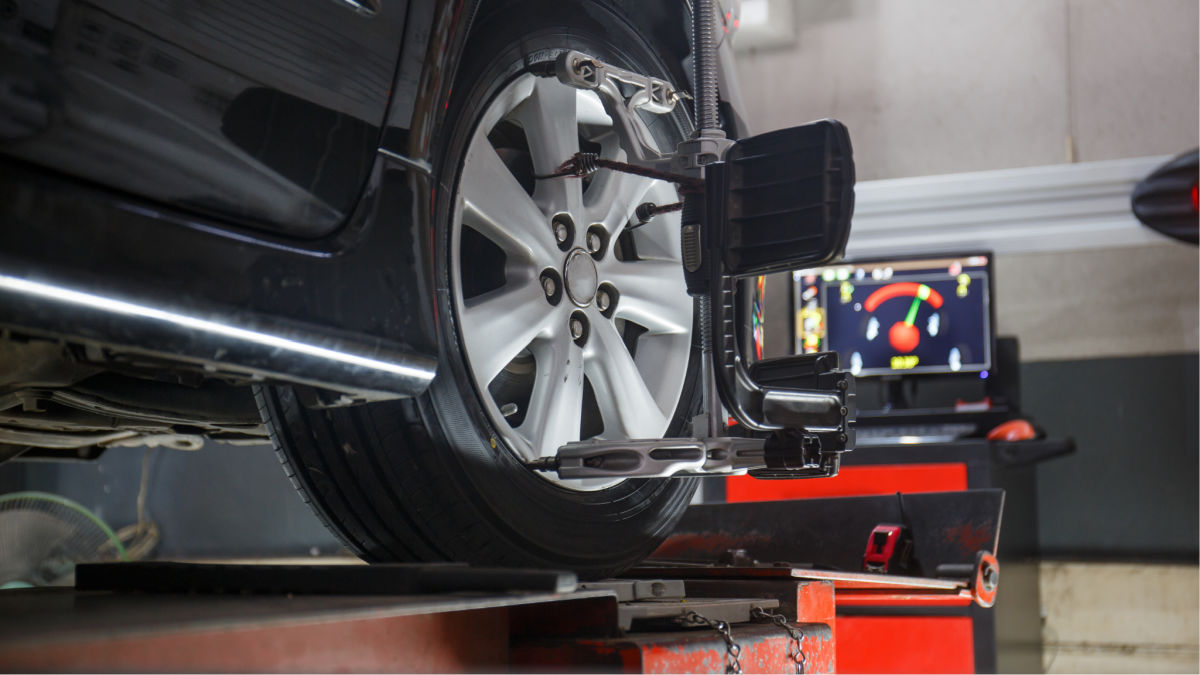
What Are the Signs That Your Car Needs an Alignment?
- Vehicle is pulling to one side
- Performance is Reduced
- Increased tire wear
- Increased fuel use
- Car or Truck is shaking at high speed
These are significant indications that your car needs an alignment. One is the position of the steering wheel. A tilt to one side or the other signifies the alignment has shifted.
This is also felt when driving. Even if you keep the steering wheel straight, your car will drift toward the direction of the misalignment. The pattern continues each time you straighten the wheel.
A change in how the car handles points to a misalignment. Bumps and ruts may be rougher than normal. In addition, your car may feel like it’s floating when you drive at higher speeds.
If you notice these traits, there’s one last thing to look at to determine if you tires need alignment. Check the treads. If one side of the tire is more worn down than the other, an alignment is required.
What is a wheel alignment?
Alignment doesn’t mean the tires are ramrod straight. They need to be set in a certain way to be effective. A proper alignment improves performance and minimizes wear on the tires.
There are two angles technicians examine in an alignment — camber and toe. The former is a measure of the tire’s top and how it sits on the road. The latter is the tire’s straight-ahead position.
Normally, the camber angle is set to neutral or slightly negative. This prevents excessive tire wear. The toe is set to zero to maintain stability when driving.
What are the signs of a bad alignment?
In addition to the signs mentioned above, the best way you or a technician determine if an alignment is needed is through observation and measurement. The technician will check the camber and toe angles by sight. Then, they’ll hook the vehicle up to a computer to get proper measurements.
Drivers might be able to see the signs of a bad alignment. If the camber angle is too positive or negative, you’ll see a slant in the tires and additional wear. If the toe angle is far off center, there will be instability when you drive.
Does alignment fix vibration?
Most of the time, a wheel alignment doesn’t fix vibration issues. This is more likely due to a broken part in the steering or suspension. It can also be related to warped brake rotors or an imbalance in the tires.
What parts affect alignment?
A majority of alignments shift due to suspension issues. Normal settling and fatigue are the biggest culprits. For example, alignments start to shift as the suspension springs age.
Another major player are the bushings. These are the rubber protectors that reduce the noise and movement of the car and road. If impacts like potholes or big bumps are frequent in driving, the suspension wears faster
Suspension springs and bushings are just two parts that can shift wheel alignment. Bent or worn tie rods, strut mounts, and ball joints can get cracked bent or worn. Whether it’s through normal wear, aggressive driving, or an accident, changes in these parts create an environment for misalignment.
How fast will tires wear with bad alignment?
It depends when you notice the issue. When the bad alignment is small, the life of your tires will be reduced only a few hundred miles. Though minor, this is still a sign to get an alignment.
If the alignment is major — the steering wheel is heavily tilted with excessive wandering — the amount changes. In this scenario, several thousand miles are cut from the lives of your tires. It’s at this point an alignment is warranted instead of suggested.
If you notice any of these issues with your vehicle, it’s time to make an appointment so we can diagnose the issue. In the end, it’s better to take precautions than to pay for extensive repairs later.
SHOP HOURS
Mon-Fri: 8am-5pm
Saturday: 8am-2pm
Sunday: Closed
QUESTIONS?
CLIENT REVIEWS
Amazing customer service!!! Fair prices and timely completion of Work.
